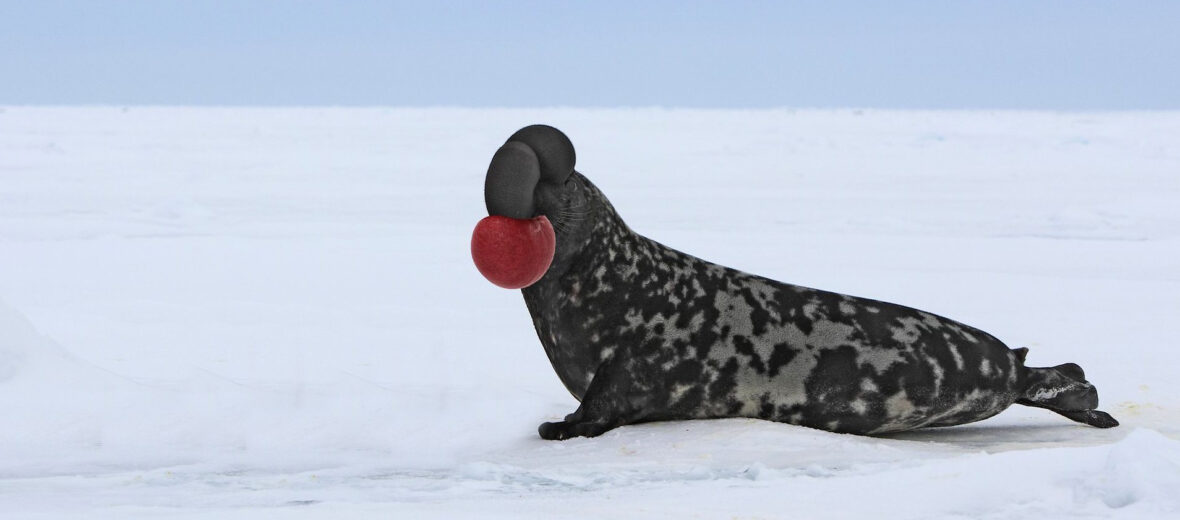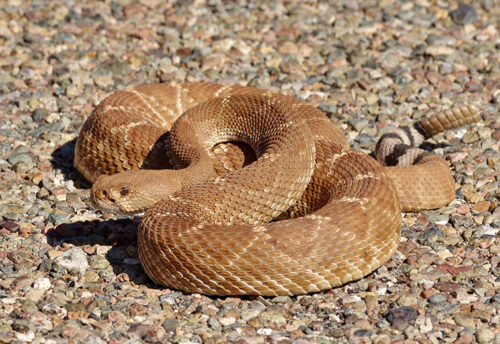
A member of the Phocid family (true seal), the hooded seal belongs to the order Pinnipedia, which includes sea lions, seals, and walruses. They can be found in the colder waters of the North Atlantic and Arctic Oceans. Due to habitat destruction, at the hands of oil drilling and mining, shipping lanes (causing boat strike – being hit by boats and/or propellers), overfishing, and climate change, these interesting critters are listed as Vulnerable by the IUCN. Their populations are also decreasing.
First the Stats…
Scientific name: Cystophora cristata
Weight: Up to 610 lbs.
Length: Up to 7.6 feet
Lifespan: Up to 35 years
Now on to the Facts!
1.) Hooded seals are so named for their bi-lobed hood. This is an enlargement of the nasal cavity on the heads of males. Females lack this adornment.
2.) They prey on squid, octopuses, sea stars, mussels, Atlantic cod, Greenland halibut, redfish, capelin, Arctic Cod, and herring.
3.) Orcas, Greenland sharks, and polar bears all prey on hooded seals. They are also hunted by humans, for their oil, blubber, pelts, and more.
4.) Hooded seals are diurnal (active during the day), like other seals.
5.) A group of seals is called a bob, colony, harem, herd, pod, or rookery.
But wait, there’s more on the hooded seal!
6.) What’s up with that red balloon-like apparatus? Their telltale, enlarged nasal cavity, or hood, is inflated during courtship and as an aggressive stance for defense. The male can inflate this hood and even produce sounds with it.
7.) They move this inflated hood, as well as their septum, up and down, making whooshes and pings.
Did you know…?
Hooded seals can dive for over 30 minutes at a time.
8.) The average hood size is about 2x the size of a football. When inflated, it makes the seals head look twice its size.
9.) These seals are polygynous (1 male mates with multiple females).
10.) Females undergo a delayed implantation (delay in pregnancy) of up to 3.7 months after mating. They then experience up to a 250 day gestation (pregnancy) that yields a single pup.
But wait, there’s still more on the hooded seal!
11.) Pups are weened at up to 12 days and are then left to fend for themselves at that time.
12.) The pups are called “blue-backs” due to their blue-black skin, which they shed at around 14 months old.
13.) Even though they are equipped for the cold environment in which they live, they will shiver while on land. When in the water, they stop shivering. As shivering causes a need for more oxygen and would result in shorter dive times.
14.) The hooded seal can emit sounds that range from 6Hz – 500 Hz. These sounds can often be heard from the water as well as on land.
Now a Short Hooded Seal Video!
Be sure to share & comment below! Also, check out the Critter Science YouTube channel. Videos added frequently!
Want to suggest a critter for me to write about? Let me know here.



